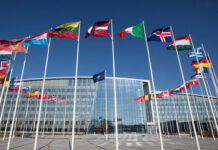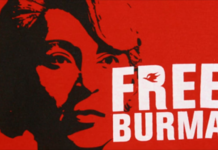Between 28 April and 1 May 2021, the Kyrgyzstan-Tajikistan border was the scene of the most violent armed clashes in the region in the last twenty years. Compared to similar episodes in the past, the presence of regular armies and the use of mortars and heavy vehicles was particularly disturbing. The toll was devastating: hundreds were injured, houses were destroyed, and about 50,000 residents on both sides of the border were forced to leave their homes. According to official figures, there were 36 Kyrgyz victims and 19 Tajik victims.
The conflict between Kyrgyzstan and Tajikistan
The conflict originated in Golovnoy, a water distribution point that Kyrgyzstan considers as part of its territory, as does Tajikistan. According to the Kyrgyz authorities, the clashes were triggered by the installation by the Tajiks of surveillance cameras near a water distribution point in the Batken region. This is a case in point. The most violent incidents around and on the Kyrgyz-Tajik border have always depended on disputes over infrastructure, land or water resources and the construction of buildings on disputed land. The same applies to the Kyrgyz-Uzbek border. Uzbekistan has long adopted a muscular stance on cross-border issues, relying on the best-equipped army in the region, with mined borders, the issuing of troops to disputed territories, and warlike rhetoric. A significant change in register came in 2016, however, with the election of Shavkat Mirziyoyev as president, replacing the Uzbek autocrat Islam Karimov, who had started a cold war-like conflict with his Tajik counterpart, Emomali Rahmon, over the construction of some hydroelectric plants.
Bilateral relations and the external enemy
Analysts claim that the harshness of the clashes between Kyrgyzstan and Tajikistan depended more on the instrumental use that the ruling parties made of the initial incident than on the cooling or hardening of bilateral relations. For all governments in the area, the emphasis on the external enemy has so far served to gain public support and divert attention from serious internal problems, starting with the economic ones and the unfair destruction of state resources. In this case, it applies in particular to Kyrgyzstan’s Sadyr Japarov, who came to power in a controversial manner between the end of 2020 and the beginning of 2021 and was able to recompose the political framework around the war against Tajikistan. On the Tajik front, President Emomali Rahmon, who has been in power since 1994, while saying he was willing to seek a diplomatic solution to the dispute, wanted to reassure the population by personally visiting Vorukh, a Tajik enclave surrounded by Kyrgyz territory, declaring that it would always remain Tajik territory. Conflicts in the area are increasing due to the tendency over the last 25 years to strengthen the respective national identities. This has favoured the consolidation of exclusive self-perceptions that no longer point to the common Soviet matrix.
Borders and enclaves
Conflicts and clashes are ongoing since the border lines were drawn in the 1920s and 1930s. The origin is the administrative and territorial reform carried out in Central Asia in the mid-1920s, which led to the formation of the present-day states of Kazakhstan, Kyrgyzstan, Tajikistan, Turkmenistan and Uzbekistan. While within the USSR those borders were mostly formal and did not prevent crossings, with the emergence of new states, the residents of border areas and numerous enclaves began to suffer the consequences of partitions between new sovereign territories.
The presence of minority enclaves within populations affects all Central Asian countries except Turkmenistan. Kazakhstan does not have any in its own territory but has two in Uzbekistan. The same applies to Tajikistan, which has two enclaves in Kyrgyzstan and one in Uzbekistan. In turn, Kyrgyzstan has four Uzbek enclaves and two Tajik enclaves. Additionally, in Uzbekistan there is one Tajik enclave, one Kyrgyz enclave and two Kazakh enclaves. The problem is particularly evident in the Ferghana Valley, which is divided between Uzbekistan, Kyrgyzstan and Tajikistan, where high population density, scarce land and water resources, and growing unemployment favours the emergence of conflicts. Recently the Uzbek authorities opted for a thawing policy in the valley, clearing part of the border with Tajikistan of mines and reopening many checkpoints.
The region’s other major problem is the presence of thousands of kilometres of disputed borders. The severity of border tensions depends on each case. Particularly difficult is the situation on the border between Kazakhstan and Turkmenistan, which passes through the desert plateau of Ustyurt: it took 17 years to conclude an agreement between the two countries in 2018. The diplomatic process that led to the negotiated agreement on the Kazakh-Kyrgyz border took 20 years, from 1999 to 2019. After yet another meeting in May 2021, negotiations between Kazakhstan and Uzbekistan may close before the end of the year. The first state visit of the Uzbek president was to Ashgabat, Turkmenistan. Interrupted in 2000, the discussions on the long border – 1,650 kilometres – resumed this year and could still be resolved. Started in 2003, the negotiations on the Uzbek-Kazakhstan border took a positive turn in 2017, with the almost complete demarcation of competences on the 2,300-kilometre border. Progress has also been made in recent years on the 1,300-kilometre border between Uzbekistan and Tajikistan, with around 20% of it disputed. In March 2018, Shavkat Mirziyoyev and Emomali Rahmon signed an agreement on some portions, while demarcation commissions meet regularly. There were partial exchanges of territory between Uzbekistan and Kyrgyzstan in September 2019 and 92% of the border lines have been agreed. As for the border between Kyrgyzstan and Tajikistan, it is about 970 kilometres of which only 60% is clearly demarcated. As we have seen, the border remains strongly disputed and it has seen regular conflicts in recent years: there were more than a dozen violent clashes in 2020 and the most recent clashes last spring resulted in deaths and injuries.
Despite the diplomatic progress listed, ethno-communal conflicts are likely to continue to affect the region. On the eve of the 30th anniversary of their independence, coinciding with the dissolution of the Soviet empire, the countries of Central Asia still do not have clearly defined borders that are accepted by all.
The regional and international framework
Assessed within a regional framework, the recent military conflict between Tajik and Uzbek forces highlights some positive elements. The other Central Asian countries have carefully avoided siding with one or the other actor in the dispute, with a balanced position. Also on the international level, none of the major powers with strategic interests in the region (the United States, Russia or China) have shown any particular interest in exploiting the situation to gain a strategic advantage. However, the US withdrawal from Afghanistan and Russia’s inability – overexposed on other fronts – to maintain control over regional security bodies has triggered new international dynamics, whose contours will be better defined in the coming months and years.























